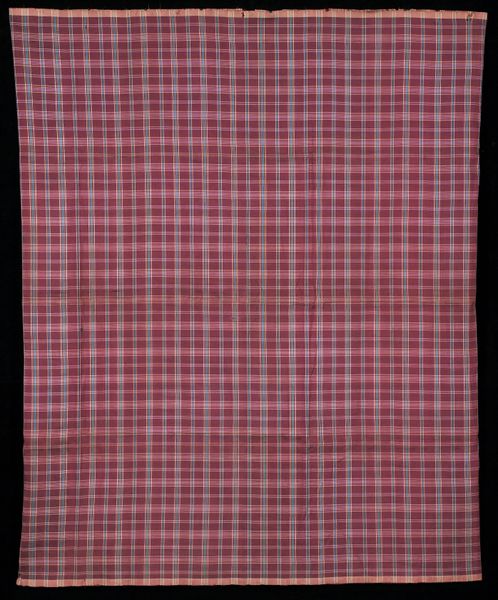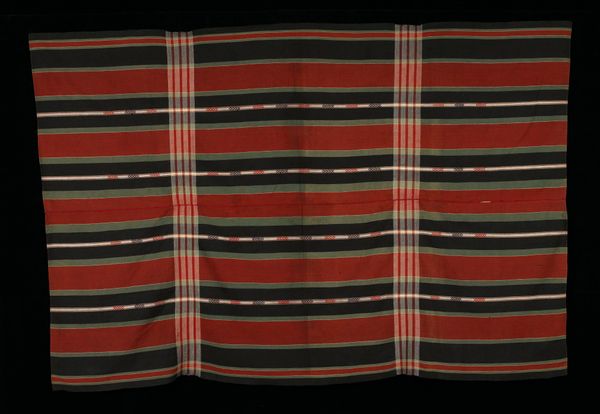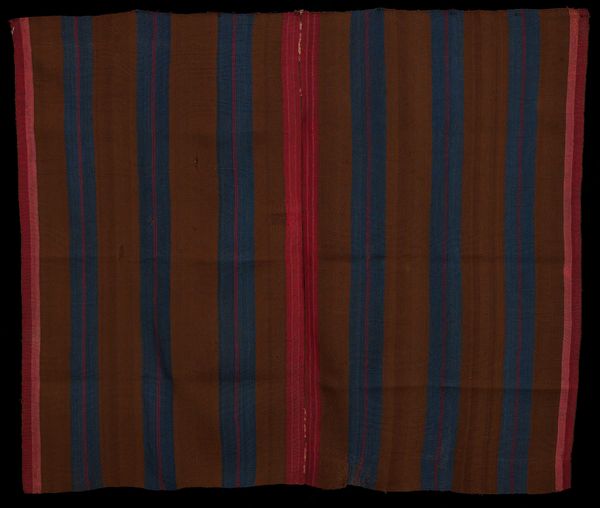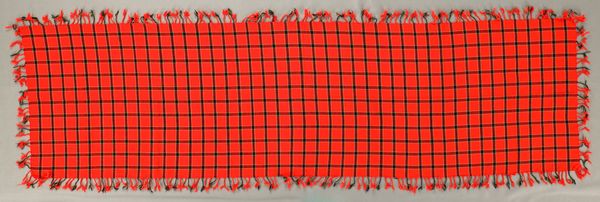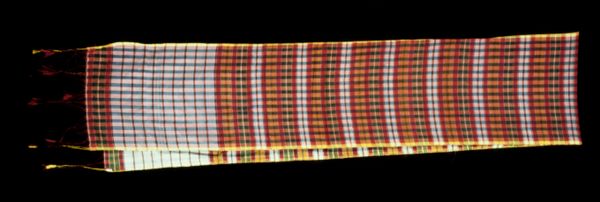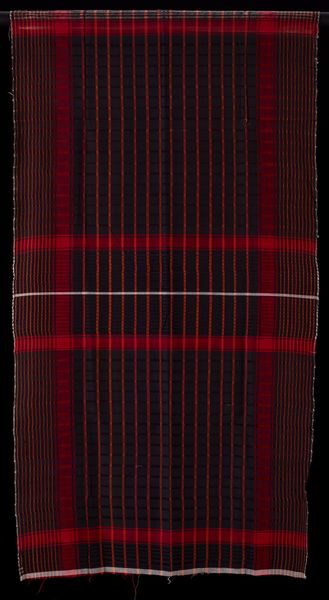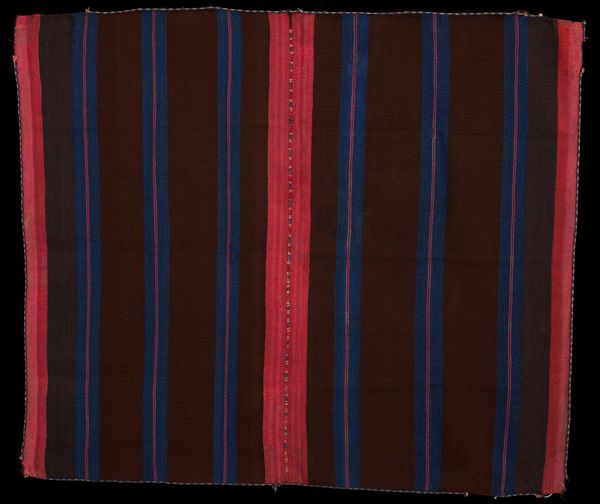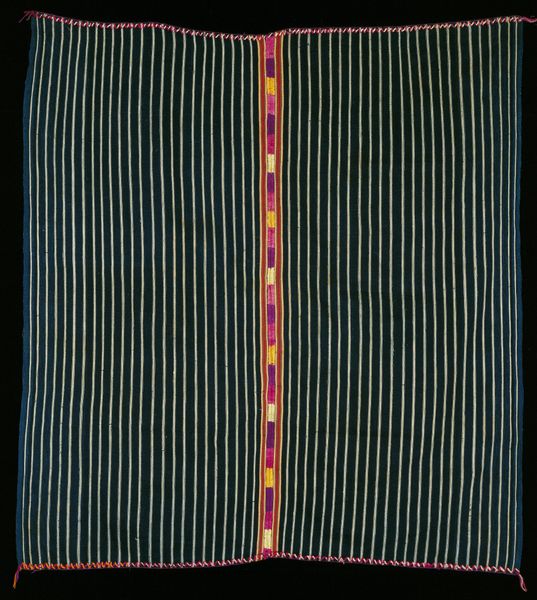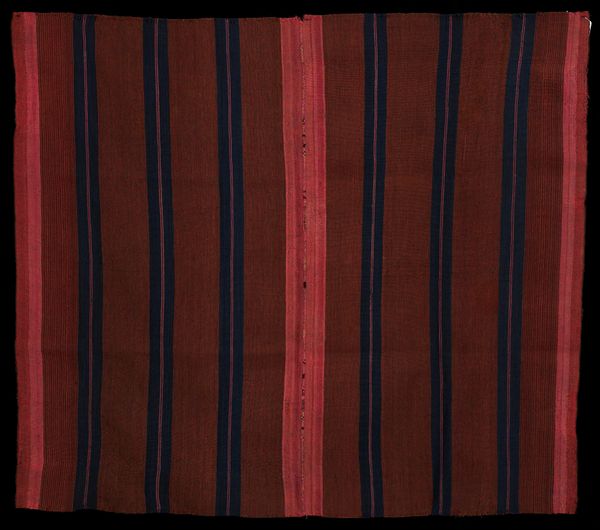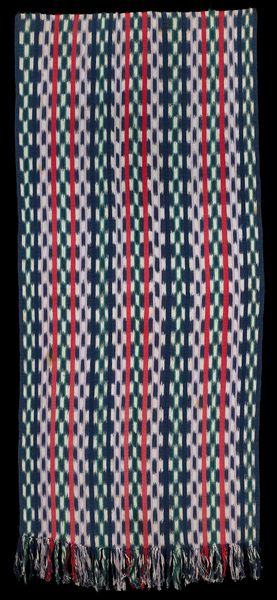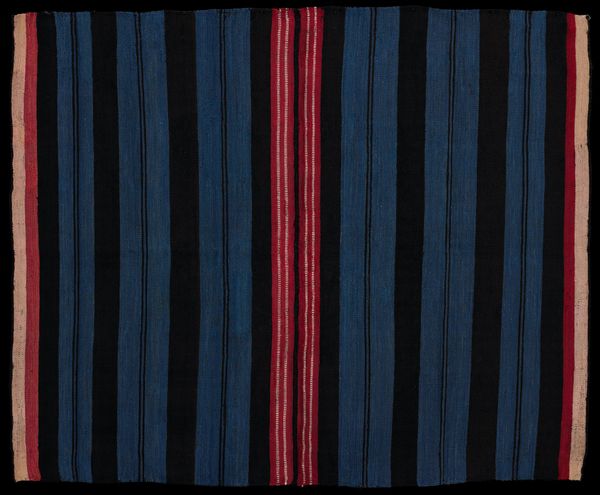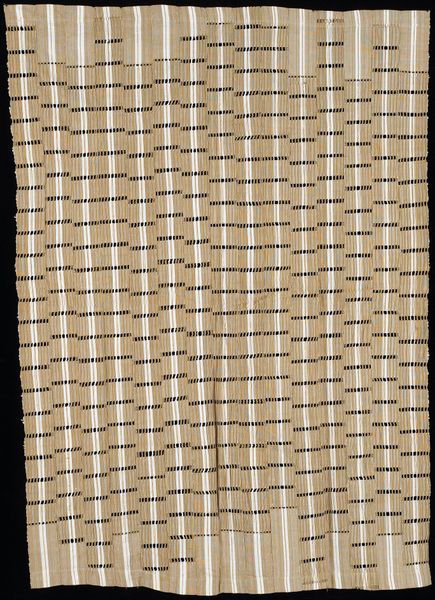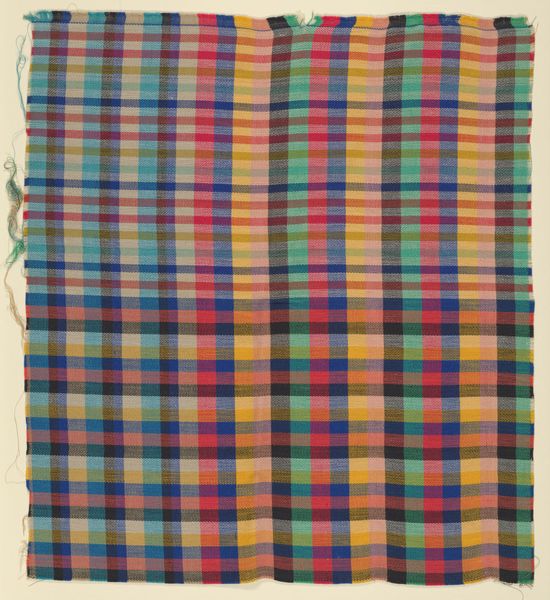
fibre-art, weaving, textile
#
fibre-art
#
weaving
#
textile
#
geometric
Dimensions: 85 x 72 in. (215.9 x 182.9 cm)
Copyright: Public Domain
Curator: The work before us is called "Blanket," and dates from the late 19th century. The anonymous maker employed a fiber art weaving technique, and it's currently held at the Minneapolis Institute of Art. Editor: It’s funny, my first impression is that it feels really familiar—comforting even. I recognize that color combination, a rusty red with what looks like a periwinkle blue. There's an honesty in the simple geometric patterns, an openness. Curator: That familiarity may lie in the grid formation; it's a widespread cultural form found in textiles globally. What’s also noteworthy here is the inherent symbolism of the colors used. The periwinkle blue is interesting—blue often symbolizes truth, serenity, or even healing. Combined with the deep red, suggestive of vitality, maybe protection, perhaps? Editor: Exactly. The combination of domestic craft and basic geometry touches on something really fundamental, but I wonder how this object circulated and who owned it originally? Its simplicity can be read as naive, perhaps, but given that textile production was a deeply gendered space, I also think about how labor and artistic skill get devalued when attached to women or domestic work. Curator: That's a fair point. Considering that the maker is unknown adds another layer. Was this blanket used daily or was it kept only for special occasions, further deepening the ties to memory? Every element seems to resonate with the cultural implications and weight associated with textiles. Editor: Right, it's both ubiquitous and intensely personal, which allows the object to move in multiple directions depending on the beholder. By situating it in our current moment, that dynamic takes on a kind of urgent resonance— thinking about warmth, shelter, care—things we need to be constantly reminded of as social issues. Curator: I concur. We see a relatively simple domestic item transforming into a symbol of more meaningful reflections on value, and even the universal experience of security. Editor: Precisely, viewing it as more than just an object gives rise to a whole new interpretation and potential, which makes me thankful that the museum continues to collect works that provoke ongoing critical thought.
Comments
No comments
Be the first to comment and join the conversation on the ultimate creative platform.
